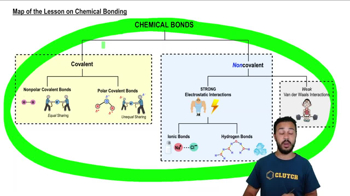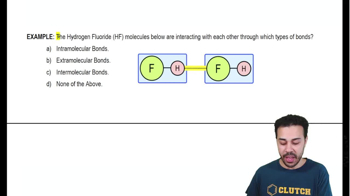Table of contents
- 1. Introduction to Biology2h 42m
- 2. Chemistry3h 40m
- 3. Water1h 26m
- 4. Biomolecules2h 23m
- 5. Cell Components2h 26m
- 6. The Membrane2h 31m
- 7. Energy and Metabolism2h 0m
- 8. Respiration2h 40m
- 9. Photosynthesis2h 49m
- 10. Cell Signaling59m
- 11. Cell Division2h 47m
- 12. Meiosis2h 0m
- 13. Mendelian Genetics4h 44m
- Introduction to Mendel's Experiments7m
- Genotype vs. Phenotype17m
- Punnett Squares13m
- Mendel's Experiments26m
- Mendel's Laws18m
- Monohybrid Crosses19m
- Test Crosses14m
- Dihybrid Crosses20m
- Punnett Square Probability26m
- Incomplete Dominance vs. Codominance20m
- Epistasis7m
- Non-Mendelian Genetics12m
- Pedigrees6m
- Autosomal Inheritance21m
- Sex-Linked Inheritance43m
- X-Inactivation9m
- 14. DNA Synthesis2h 27m
- 15. Gene Expression3h 20m
- 16. Regulation of Expression3h 31m
- Introduction to Regulation of Gene Expression13m
- Prokaryotic Gene Regulation via Operons27m
- The Lac Operon21m
- Glucose's Impact on Lac Operon25m
- The Trp Operon20m
- Review of the Lac Operon & Trp Operon11m
- Introduction to Eukaryotic Gene Regulation9m
- Eukaryotic Chromatin Modifications16m
- Eukaryotic Transcriptional Control22m
- Eukaryotic Post-Transcriptional Regulation28m
- Eukaryotic Post-Translational Regulation13m
- 17. Viruses37m
- 18. Biotechnology2h 58m
- 19. Genomics17m
- 20. Development1h 5m
- 21. Evolution3h 1m
- 22. Evolution of Populations3h 52m
- 23. Speciation1h 37m
- 24. History of Life on Earth2h 6m
- 25. Phylogeny2h 31m
- 26. Prokaryotes4h 59m
- 27. Protists1h 12m
- 28. Plants1h 22m
- 29. Fungi36m
- 30. Overview of Animals34m
- 31. Invertebrates1h 2m
- 32. Vertebrates50m
- 33. Plant Anatomy1h 3m
- 34. Vascular Plant Transport1h 2m
- 35. Soil37m
- 36. Plant Reproduction47m
- 37. Plant Sensation and Response1h 9m
- 38. Animal Form and Function1h 19m
- 39. Digestive System1h 10m
- 40. Circulatory System1h 57m
- 41. Immune System1h 12m
- 42. Osmoregulation and Excretion50m
- 43. Endocrine System1h 4m
- 44. Animal Reproduction1h 2m
- 45. Nervous System1h 55m
- 46. Sensory Systems46m
- 47. Muscle Systems23m
- 48. Ecology3h 11m
- Introduction to Ecology20m
- Biogeography14m
- Earth's Climate Patterns50m
- Introduction to Terrestrial Biomes10m
- Terrestrial Biomes: Near Equator13m
- Terrestrial Biomes: Temperate Regions10m
- Terrestrial Biomes: Northern Regions15m
- Introduction to Aquatic Biomes27m
- Freshwater Aquatic Biomes14m
- Marine Aquatic Biomes13m
- 49. Animal Behavior28m
- 50. Population Ecology3h 41m
- Introduction to Population Ecology28m
- Population Sampling Methods23m
- Life History12m
- Population Demography17m
- Factors Limiting Population Growth14m
- Introduction to Population Growth Models22m
- Linear Population Growth6m
- Exponential Population Growth29m
- Logistic Population Growth32m
- r/K Selection10m
- The Human Population22m
- 51. Community Ecology2h 46m
- Introduction to Community Ecology2m
- Introduction to Community Interactions9m
- Community Interactions: Competition (-/-)38m
- Community Interactions: Exploitation (+/-)23m
- Community Interactions: Mutualism (+/+) & Commensalism (+/0)9m
- Community Structure35m
- Community Dynamics26m
- Geographic Impact on Communities21m
- 52. Ecosystems2h 36m
- 53. Conservation Biology24m
2. Chemistry
Introduction to Chemical Bonding
Problem 8`
Textbook Question
What coefficients must be placed in the following blanks so that all atoms are accounted for in the products?
C6H12O6 → _____C2H6O + _____CO2
a. 2; 1
b. 3; 1
c. 1; 3
d. 2; 2
 Verified step by step guidance
Verified step by step guidance1
Identify the number of each type of atom in the reactant, C6H12O6. There are 6 carbon (C), 12 hydrogen (H), and 6 oxygen (O) atoms.
Write the chemical formulas for the products: C2H6O (ethanol) and CO2 (carbon dioxide). Ethanol contains 2 carbon, 6 hydrogen, and 1 oxygen atom, while carbon dioxide contains 1 carbon and 2 oxygen atoms.
Set up a system of equations to balance the atoms. For carbon: 6 = 2x + y, where x is the coefficient for C2H6O and y is the coefficient for CO2.
For hydrogen: 12 = 6x, solve for x to find the coefficient for C2H6O.
For oxygen: 6 = x + 2y, solve for y using the value of x obtained from the hydrogen balance.
 Verified video answer for a similar problem:
Verified video answer for a similar problem:This video solution was recommended by our tutors as helpful for the problem above
Video duration:
1mPlay a video:
Was this helpful?
Key Concepts
Here are the essential concepts you must grasp in order to answer the question correctly.
Chemical Equation Balancing
Balancing chemical equations involves ensuring that the number of atoms for each element is the same on both sides of the equation. This reflects the law of conservation of mass, which states that matter cannot be created or destroyed in a chemical reaction. To balance an equation, coefficients are adjusted to achieve equal numbers of each type of atom in the reactants and products.
Recommended video:
Guided course

Chemical Reactions
Stoichiometry
Stoichiometry is the calculation of reactants and products in chemical reactions. It uses the balanced chemical equation to determine the proportions of substances involved. Understanding stoichiometry is essential for predicting the amounts of products formed and reactants needed, as it relies on the mole concept and the relationships between different chemical species.
Molecular Composition
Molecular composition refers to the specific arrangement and number of atoms in a molecule, which defines its chemical identity. In the context of the given equation, understanding the molecular composition of glucose (C6H12O6), ethanol (C2H6O), and carbon dioxide (CO2) is crucial for determining how these molecules can be rearranged and balanced in a chemical reaction.
Recommended video:
Guided course

Soil Composition

 6:53m
6:53mWatch next
Master Introduction to Chemical Bonding with a bite sized video explanation from Jason
Start learningRelated Videos
Related Practice











